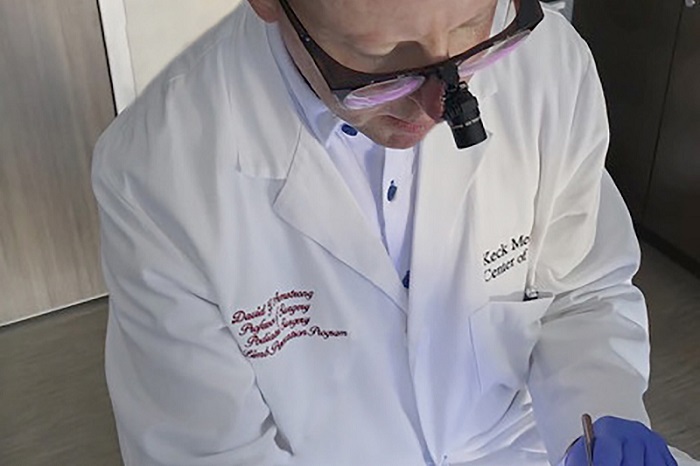Handheld Device “Lights Up” Bacteria in Wounds to Help Surgeons Prevent Infection
Posted on 28 Aug 2024
Millions of people worldwide suffer from chronic wounds—wounds that fail to heal within a few months. Such wounds almost invariably harbor bacteria, which if not adequately detected and removed, can escalate into serious infections, potentially leading to severe consequences like amputation, particularly in cases involving limbs. This risk is notably pronounced in individuals with diabetic foot ulcers, which affect one-third of those with diabetes. During the process known as debridement, physicians cleanse the wound by removing as much bacteria as possible. However, they are often hindered by the fact that not all bacteria are visible to the naked eye, leading to potential oversight of some bacteria during the cleaning process. Now, new research has introduced a potentially more effective technique for detecting bacteria during wound debridement.
This method involves autofluorescence (AF) imaging, utilizing a handheld device that employs violet light to highlight bacteria that are otherwise invisible. This technology causes the bacterial cell walls to fluoresce, displaying different colors based on the type of bacteria present, which enables immediate identification of both the presence and type of bacteria within a wound In the research, investigators at Keck Medicine of USC (Los Angeles, CA, USA) conducted a literature review of studies on the effectiveness of AF imaging in treating diabetic foot ulcers. The findings, published in Advances in Wound Care, reveal that AF imaging successfully detects bacteria in wounds in about 90% of cases that conventional clinical evaluations fail to identify.

Typically, after debridement, physicians send tissue samples to a laboratory to identify the specific bacteria types present and to determine the most effective treatment approach, including antibiotic therapy or specific wound dressings. This standard procedure can take several days, during which an infection might worsen. AF imaging, however, enables physicians to make immediate clinical decisions directly during the debridement process, without waiting for laboratory results. This timely intervention can prevent the unnecessary use of antibiotics, helping to avert prolonged antibiotic treatments and reduce the risk of developing antibiotic resistance. Physicians at Keck Medicine are already employing this technology to effectively manage patients with chronic wounds, including those suffering from diabetic foot ulcers.
“We’re hopeful this new technology can help surgeons improve their accuracy when pinpointing and consequently removing bacteria from wounds and therefore improve patient outcomes, particularly for those with diabetic foot wounds,” said David G. Armstrong, DPM, PhD, a podiatric surgeon and limb preservation specialist with Keck Medicine and senior author of the study. “The early detection and removal of bacteria from a wound is vital to preventing avoidable amputations.”
Related Links:
Keck Medicine of USC














